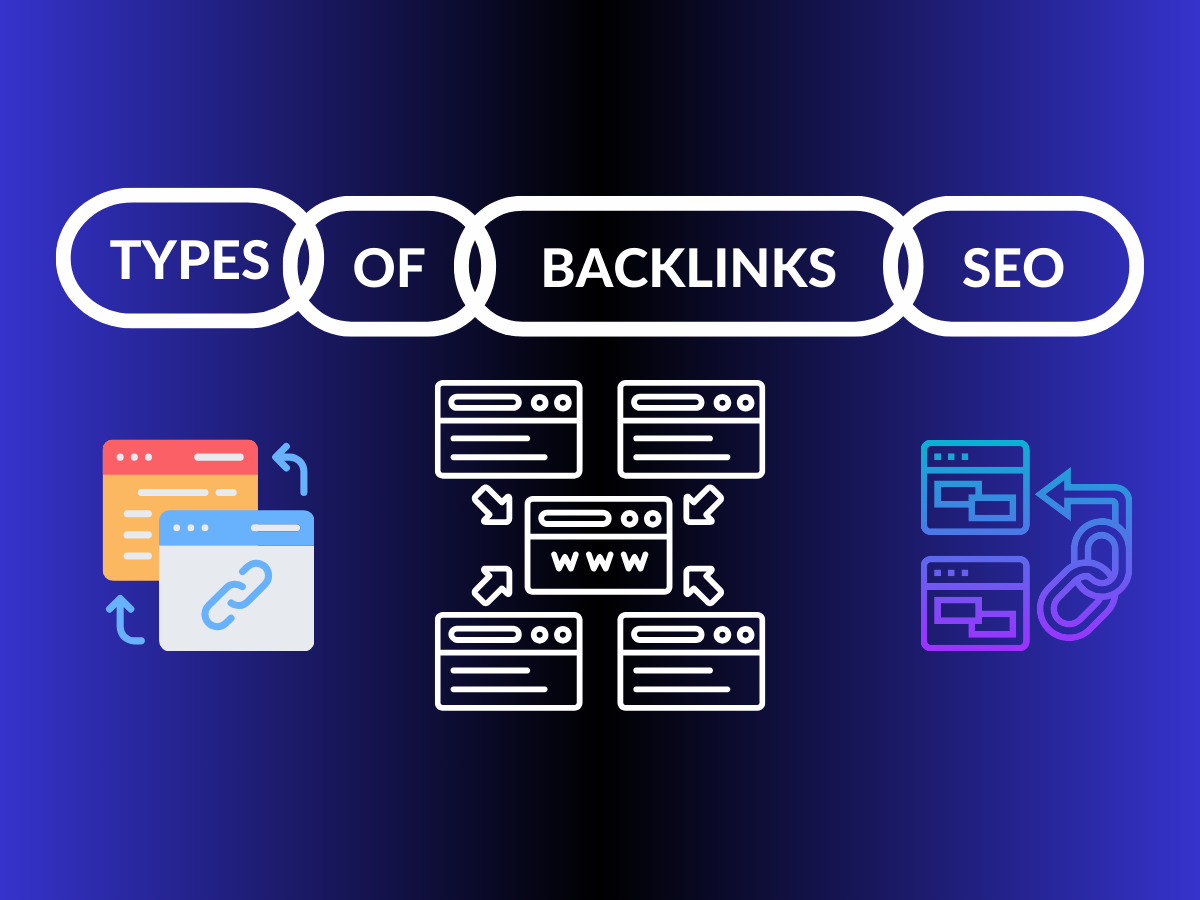Table of Contents
Overview
Backlinks, also known as inbound links, are a fundamental element in the realm of search engine optimisation (SEO).
These are hyperlinks from external websites that direct users to your own web pages.
The overall quality and quantity of these backlinks play a pivotal role in determining your website’s position on search engine results pages.
Grasping the different varieties of backlinks and their respective impacts is vital for crafting a successful SEO strategy.
Do Follow Backlinks
Do follow backlinks are the most sought-after type in the SEO world.
They are the kind of hyperlinks that allow search engines to follow through to your website.
This process contributes ‘link juice’, a term used to describe the value passed on from one site to another. Such backlinks can significantly boost your site’s search engine ranking.
When these links originate from websites with high authority, they further strengthen your website’s credibility and visibility on search engine results pages.
Obtaining do follow backlinks from esteemed sources should be a key objective in your SEO efforts.
White Hat Backlinks
White hat backlinks are the hallmark of ethical SEO practices.
They are gained through methods that fully comply with the guidelines set by search engines.
These techniques include creating high-quality content that naturally attracts backlinks, contributing guest posts to reputable websites, and ensuring your website is listed in relevant online directories.
Such white hat practices not only improve your website’s ranking in search results but also drive high-quality traffic to your site.
Importantly, they help in building and maintaining a strong and respectable online reputation.
Toxic Backlinks
In contrast, toxic backlinks are those that can harm your website’s standing in search results.
These links often originate from dubious or low-quality websites and are usually the by-product of black hat SEO tactics, like purchasing links or partaking in link farms.
It’s essential to regularly monitor your backlink profile and take steps to disassociate your site from these harmful links.
The disavow tool provided by search engines can be instrumental in this process, helping to maintain the health and integrity of your website’s SEO.
Spam Backlinks
Spam backlinks are generally generated through automated methods and are considered an underhanded tactic in SEO.
These links originate from spam-ridden websites and, if not addressed, can negatively impact your website’s SEO performance.
To protect your website from such links, it is crucial to implement robust security measures, consistently monitor your backlink profile, and report any spammy links to search engines like Google.
Proactive management of your backlinks is essential in safeguarding your site’s SEO health.
How Many Backlinks are Beneficial?
While the presence of backlinks is integral to SEO, it’s important to note that their quality outweighs their quantity.
A multitude of low-quality links can be more detrimental to your site than a smaller number of high-quality ones.
Therefore, the focus should be on acquiring backlinks from authoritative and relevant sources, rather than merely accumulating a large number of links.
Prioritising the quality of your backlinks is a smarter and more effective approach in the long run.
Australian Backlinks (.com.au)
Country-specific backlinks, such as those from Australian domains (.com.au), can be incredibly beneficial for local SEO efforts.
These links indicate to search engines that your content is particularly pertinent to users in that geographical area, thereby enhancing your visibility in local search results.
To obtain such backlinks, consider engaging in localised strategies like collaborating with local influencers, getting your site listed in regional directories, or writing guest posts on local websites.
These efforts can significantly bolster your SEO within the Australian context.
Competitor Backlinks
Analysing the backlink profiles of your competitors can offer valuable insights into their SEO strategies and help identify potential opportunities for your own website.
SEO tools like SEMRush and Ahrefs are useful for this purpose, allowing you to see where your competitors are gaining their backlinks from.
This information can guide your own link-building efforts, helping you target similar sources or identify untapped avenues for backlink acquisition.
In summary, understanding the diverse types of backlinks and their unique roles in SEO is crucial for enhancing your digital marketing strategy.
Remember, the key to effective link building lies in focusing on the quality and relevance of your backlinks, rather than merely their quantity.
With careful planning and execution, your link-building efforts can yield substantial benefits for your website’s SEO performance.
Most Frequent Questions
To keep track of your backlinks, which is crucial for SEO, you can use Google Search Console. This free tool from Google offers insights into how your website is viewed by the search engine. After verifying your site with Google Search Console, navigate to the “Links” report within the “Search Traffic” section. Here, you’ll find the total number of backlinks to your site, along with the most common sources of these links and the most linked-to pages on your site.
However, it’s worth noting that Google Search Console might not display every single backlink, due to privacy concerns. For a more comprehensive view, consider using additional SEO tools. There are numerous backlink checkers available online, both free and paid, which provide detailed information about your backlinks. These tools can show the quality of your backlinks, the domains they come from, the anchor texts used, and other valuable data.
Monitoring your competitors’ backlinks can reveal much about their SEO strategies and help you find opportunities for your own website. To check competitor backlinks, use SEO tools available online. These tools allow you to input your competitor’s URL and get a list of backlinks to their site.
By analysing these backlinks, you can understand the type of content that’s successful in your industry, identify reputable sites for potential link-building, and learn about your competitors’ link-building tactics. Remember, it’s the quality of backlinks, not just the quantity, that’s important in SEO.
The required number of backlinks to rank on search engines depends on various factors like industry competitiveness, backlink quality, and your website’s SEO strength. Generally, more high-quality backlinks correlate with higher rankings.
Focus on acquiring quality backlinks from authoritative, relevant sites rather than just amassing a large number. Besides backlinks, search engines consider other factors like site speed, mobile-friendliness, content quality, and user experience in their ranking algorithms.
Buying cheap backlinks is generally ill-advised. Search engines, with their advanced algorithms, can detect unnatural link-building practices. Purchasing backlinks can result in penalties, such as lower rankings or even removal from search results.
Rather than buying cheap backlinks, focus on creating quality content that naturally attracts backlinks. Build relationships within your niche and optimise your site for SEO. These methods require more effort but yield sustainable, long-term benefits.
Toxic backlinks can damage your SEO. If you identify bad backlinks, first try contacting the linking site’s owner and request link removal. If this doesn’t work, use Google’s Disavow Links tool to tell Google to ignore these links when evaluating your site. Be cautious with this tool; incorrect use can harm your SEO. Consider professional help if needed.






